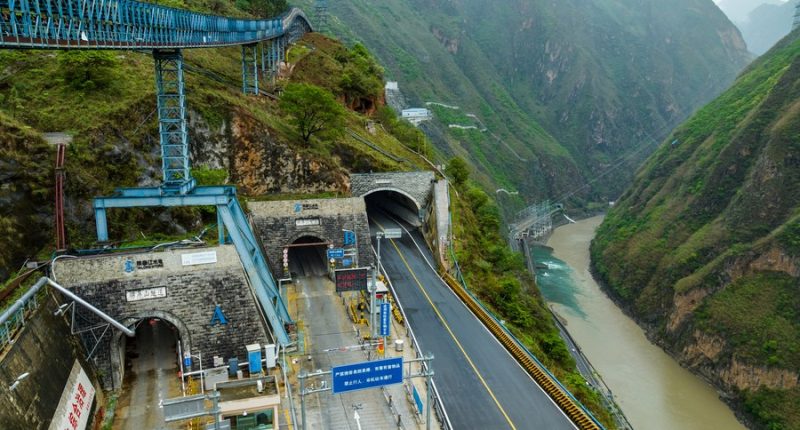CHINA has launched the world’s deepest and largest underground lab facility beneath a mountain in an attempt to solve science’s biggest mystery.
The China Jinping Underground Lab – which started its operations today – is set to offer special testing conditions not available to scientists elsewhere in the world.
The lab has been developed in China’s Sichuan Province to facilitate in-depth research about physics‘ biggest unsolved mystery – dark matter.
Believed to make at least a quarter of the universe, dark matter is an almost invisible substance that does not absorb, reflect, or emit light.
This makes it extremely hard to spot dark matter, says the European Organisation for Nuclear Research (CERN).
While modern science has proven the existence of dark matter, it has never been able to detect it directly.
more stories on china
Located at an extreme depth of 1.5 miles below the earth’s surface, the lab is being vouched as an ideal, “ultra-clean” site for scientists to detect dark matter.
At such a depth, almost all the cosmic rays – that hinder the detection of dark matter – would get blocked, aiding scientists to study the mysterious element better.
Yue Qian, a professor at Tsinghua’s Department of Engineering Physics, told Xinhua: “Only a tiny flux of cosmic rays, equal to one hundred-millionth of that on the Earth’s surface, will reach the lab.
“This will offer an ultra-clean space for scientists to seek dark matter.”
Most read in Tech
With a room capacity of 300,000 cubic metres – equivalent to 120 Olympic-sized swimming pools – it has also become the largest underground lab facility in the world.
It is almost double than Gran Sasso National Laboratory in Italy – the previous largest underground facility.
Other conditions in the lab – including extremely low environmental radiation and concentration of the naturally occurring radioactive gas radon – would also enhance dark matter detection, he added.
The lab would also facilitate and support interdisciplinary research in the fields of particle physics, nuclear astrophysics, cosmology, life sciences and rock mechanics.
Distinguished scientists from Tsinghua, Shanghai Jiao Tong and Beijing Normal University, as well as the China Institute of Atomic Energy, Institute of Rock and Soil Mechanics of the Chinese Academy of Sciences, have already been stationed in the facility, reports Xinhua.
Dark matter and the quest to find it have been the biggest problem in modern-day physics and astronomy.
Its existence was first inferred by the American-Swiss Fritz Zwicky in 1933, and now scientists can infer its being from the gravitational effect it seems to have on visible matter.
Solving the mystery of dark matter could help researchers better understand the composition of our universe and how galaxies hold together.
And it could, theoretically, help astronomers and scientists understand what science has named “dark energy”.
Dark energy is one of the most important mysteries researchers have been trying to solve.
It has been theorised that a force is accelerating the expansion of the universe, but no one knows the correct explanation.
Read more on The Sun
However, scientists have given the solution a name – dark energy.
No one knows what dark energy is – but roughly 68 per cent of the universe is made up of dark energy, according to NASA.














